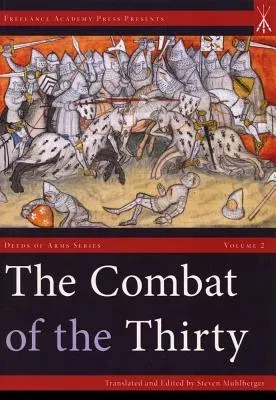On March 27, 1351, sixty armed men gathered in a field in Brittany,
halfway between the two enemy castles of Josselin and Ploermel.
Representing the garrisons of those two strongholds, these two groups of
thirty men at arms they had appeared in this field with no strategic or
tactical goal, other than to make good on their captains promise: "We
will go to an open field and there we will fight as long as we can
endure it." The battle was fought until all on one side were dead or
captured, and no one ran away. This showdown in the fields of Brittany
attracted attention in its own time and the story has been retold in
many eras since, standing as the subject of romantic inspiration and
call to bold action for over six hundred years. But was the Combat of
the Thirty an admirable deed? Even in the fourteenth century, opinions
were divided: some thought that it was a fight for no sensible reason,
"the product of presumption and rashness," while others considered it a
great demonstration of prowess, a word that designates a heroic
combination of skill and courage. Why did sixty men risk themselves in a
fight to the finish on that spring day in Brittany six and a half
centuries ago? Why did it attract attention and praise in its time? Why
does it interest us still? In this volume Steven Muhlberger translates
the historical accounts of the Combat and then examines both what
contemporaries thought, and how the battle has been remembered through
the centuries, giving readers a window into late medieval chivalric
culture. As a bonus, renowned 14th century arms and armour scholar
Douglas Strong includes an appendix analyzing the equipment used by
English, Breton and French forces on that bloody day in 1351.

